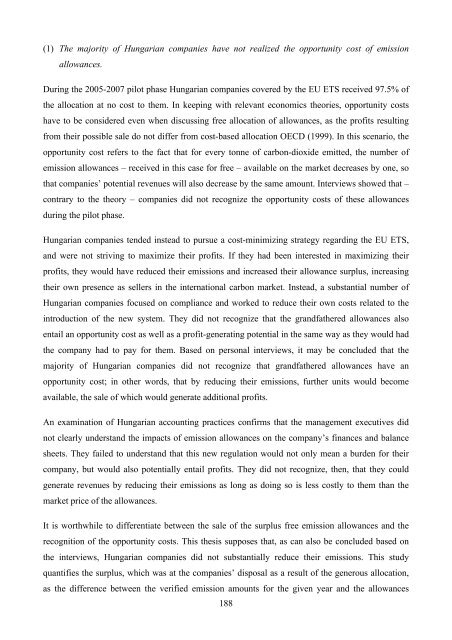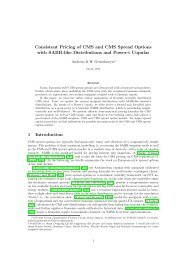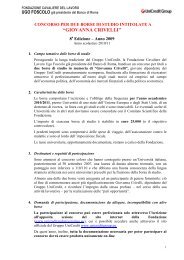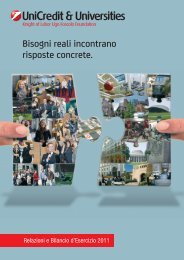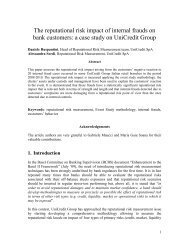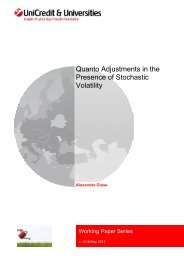Dóra Fazekas Carbon Market Implications for new EU - UniCredit ...
Dóra Fazekas Carbon Market Implications for new EU - UniCredit ...
Dóra Fazekas Carbon Market Implications for new EU - UniCredit ...
Create successful ePaper yourself
Turn your PDF publications into a flip-book with our unique Google optimized e-Paper software.
(1) The majority of Hungarian companies have not realized the opportunity cost of emission<br />
allowances.<br />
During the 2005-2007 pilot phase Hungarian companies covered by the <strong>EU</strong> ETS received 97.5% of<br />
the allocation at no cost to them. In keeping with relevant economics theories, opportunity costs<br />
have to be considered even when discussing free allocation of allowances, as the profits resulting<br />
from their possible sale do not differ from cost-based allocation OECD (1999). In this scenario, the<br />
opportunity cost refers to the fact that <strong>for</strong> every tonne of carbon-dioxide emitted, the number of<br />
emission allowances – received in this case <strong>for</strong> free – available on the market decreases by one, so<br />
that companies’ potential revenues will also decrease by the same amount. Interviews showed that –<br />
contrary to the theory – companies did not recognize the opportunity costs of these allowances<br />
during the pilot phase.<br />
Hungarian companies tended instead to pursue a cost-minimizing strategy regarding the <strong>EU</strong> ETS,<br />
and were not striving to maximize their profits. If they had been interested in maximizing their<br />
profits, they would have reduced their emissions and increased their allowance surplus, increasing<br />
their own presence as sellers in the international carbon market. Instead, a substantial number of<br />
Hungarian companies focused on compliance and worked to reduce their own costs related to the<br />
introduction of the <strong>new</strong> system. They did not recognize that the grandfathered allowances also<br />
entail an opportunity cost as well as a profit-generating potential in the same way as they would had<br />
the company had to pay <strong>for</strong> them. Based on personal interviews, it may be concluded that the<br />
majority of Hungarian companies did not recognize that grandfathered allowances have an<br />
opportunity cost; in other words, that by reducing their emissions, further units would become<br />
available, the sale of which would generate additional profits.<br />
An examination of Hungarian accounting practices confirms that the management executives did<br />
not clearly understand the impacts of emission allowances on the company’s finances and balance<br />
sheets. They failed to understand that this <strong>new</strong> regulation would not only mean a burden <strong>for</strong> their<br />
company, but would also potentially entail profits. They did not recognize, then, that they could<br />
generate revenues by reducing their emissions as long as doing so is less costly to them than the<br />
market price of the allowances.<br />
It is worthwhile to differentiate between the sale of the surplus free emission allowances and the<br />
recognition of the opportunity costs. This thesis supposes that, as can also be concluded based on<br />
the interviews, Hungarian companies did not substantially reduce their emissions. This study<br />
quantifies the surplus, which was at the companies’ disposal as a result of the generous allocation,<br />
as the difference between the verified emission amounts <strong>for</strong> the given year and the allowances<br />
188


